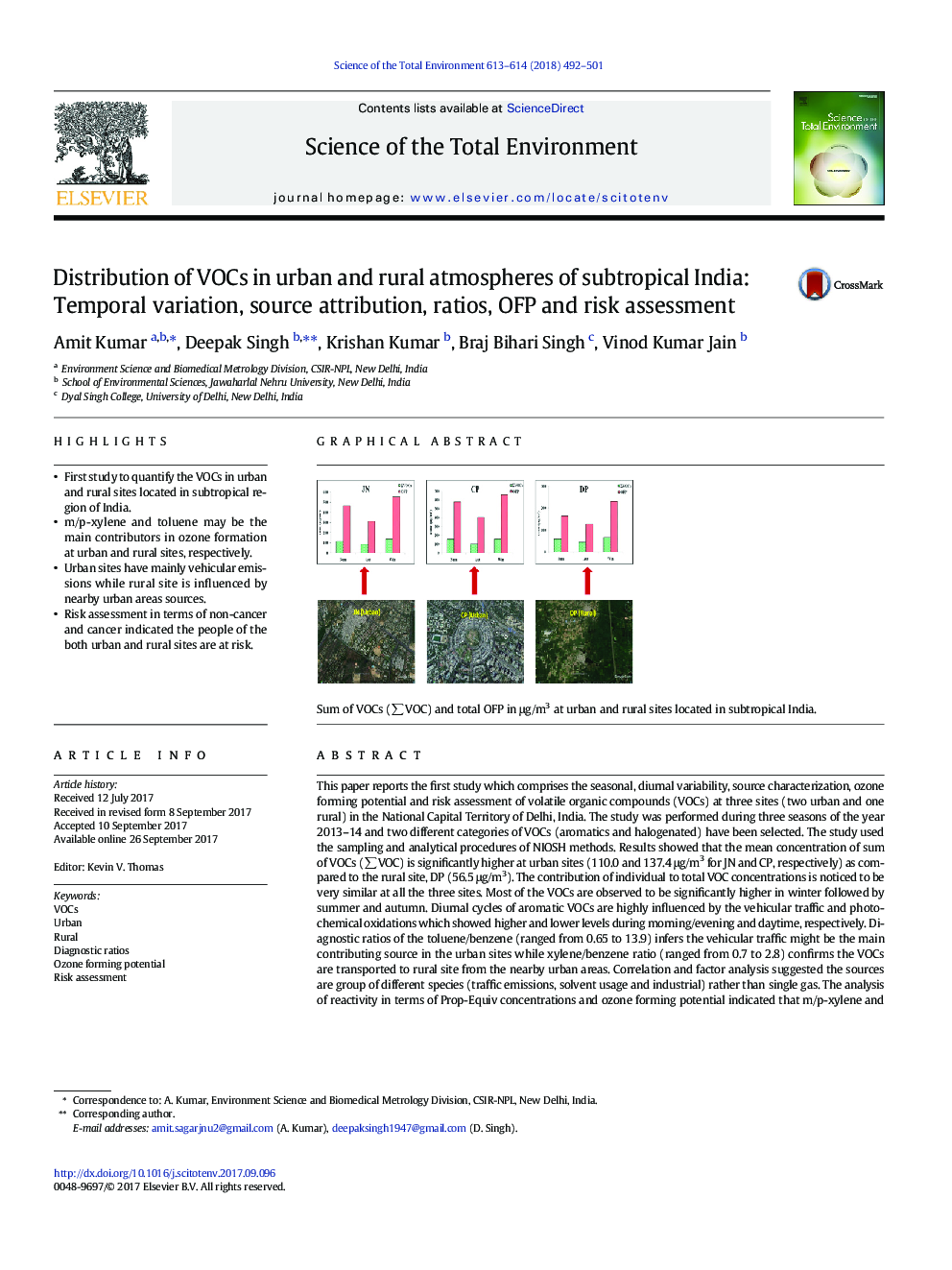| کد مقاله | کد نشریه | سال انتشار | مقاله انگلیسی | نسخه تمام متن |
|---|---|---|---|---|
| 5750112 | 1619690 | 2018 | 10 صفحه PDF | دانلود رایگان |

- First study to quantify the VOCs in urban and rural sites located in subtropical region of India.
- m/p-xylene and toluene may be the main contributors in ozone formation at urban and rural sites, respectively.
- Urban sites have mainly vehicular emissions while rural site is influenced by nearby urban areas sources.
- Risk assessment in terms of non-cancer and cancer indicated the people of the both urban and rural sites are at risk.
This paper reports the first study which comprises the seasonal, diurnal variability, source characterization, ozone forming potential and risk assessment of volatile organic compounds (VOCs) at three sites (two urban and one rural) in the National Capital Territory of Delhi, India. The study was performed during three seasons of the year 2013-14 and two different categories of VOCs (aromatics and halogenated) have been selected. The study used the sampling and analytical procedures of NIOSH methods. Results showed that the mean concentration of sum of VOCs (âVOC) is significantly higher at urban sites (110.0 and 137.4 μg/m3 for JN and CP, respectively) as compared to the rural site, DP (56.5 μg/m3). The contribution of individual to total VOC concentrations is noticed to be very similar at all the three sites. Most of the VOCs are observed to be significantly higher in winter followed by summer and autumn. Diurnal cycles of aromatic VOCs are highly influenced by the vehicular traffic and photochemical oxidations which showed higher and lower levels during morning/evening and daytime, respectively. Diagnostic ratios of the toluene/benzene (ranged from 0.65 to 13.9) infers the vehicular traffic might be the main contributing source in the urban sites while xylene/benzene ratio (ranged from 0.7 to 2.8) confirms the VOCs are transported to rural site from the nearby urban areas. Correlation and factor analysis suggested the sources are group of different species (traffic emissions, solvent usage and industrial) rather than single gas. The analysis of reactivity in terms of Prop-Equiv concentrations and ozone forming potential indicated that m/p-xylene and toluene are the main VOC contributing to the total ozone formation in urban and rural sites, respectively. Hazard ratios and lifetime cancer risk values exceeded the permissible standards established by USEPA and WHO suggests that the people are at significant risk.
315Sum of VOCs (âVOC) and total OFP in μg/m3 at urban and rural sites located in subtropical India.
Journal: Science of The Total Environment - Volumes 613â614, 1 February 2018, Pages 492-501